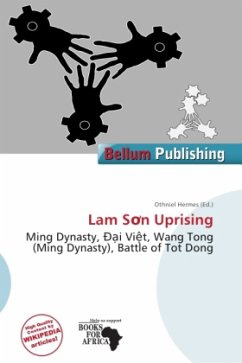Please note that the content of this book primarily consists of articles available from Wikipedia or other free sources online. In 1405 the Chinese Ming Dynasty invaded Dai Viet in northern Vietnam on the pretext of settling a succession dispute. Within a year the previously independent kingdom had been reduced to a province of China. Ming rule was harsh and provoked a resistance movement led by Le Loi, a Vietnamese landowner, who in 1416 established himself with a few followers in a mountainous region, from where he gradually built up an army of several thousand soldiers. From 1424 he began a guerilla campaign, attacking isolated garrisons. Some more than 100,000 troops were sent from China, but Le Loi's forces also grew as Vietnamese flocked to his banner. By 1426 the rebels were strong enough to take on the Chinese-commanded by the experienced general Wang Tong-in open battle. Using elephants to unnerve Wang Tong's cavalry, Le Loi routed the enemy at Tot Dong. Restricted to a few strongpoints, the Chinese forces were in a precarious situation. Le Loi offered to help Wang Tong evacuate his troops in return for a guarantee of Vietnamese independence. In 1427 the Chinese accordingly left and Le Loi became ruler of Dai Viet.
Bitte wählen Sie Ihr Anliegen aus.
Rechnungen
Retourenschein anfordern
Bestellstatus
Storno








